The most economical home heaters. How to choose an electric heater for your home
All types of electric heaters work on the same principle - they convert electricity into heat. But the only difference is the technology of this transformation.
Energy supply rules
 When purchasing electrical equipment, you also need to know the basic rules for power supply:
When purchasing electrical equipment, you also need to know the basic rules for power supply:
- If there is a need to connect a new electrical installation, you need to submit to the organization that supplies electricity to applications for obtaining technical specifications;
- The entire installation of heaters must correspond to the project and be selected taking into account the premises and conditions in it;
- All conditions are agreed with the organization and, as a result, they receive technical conditions from it in order to organize the accounting of all electrical energy;
- The electricity supplier will ensure the development and agree on established order the whole necessary documentation for the design organization.
As a result, the organization issues the conditions in which are spelled out:
- connection areas;
- the level of load and voltage of the object that will need to be connected;
- advice on how to use an electrical appliance;
- requirements for the protection device.
Review of energy saving heaters
![]() To be able to compare how efficiently modern electric heaters work for a house, a summer residence and other premises, they need small overview... To find out all useful information about their principle of work and choose a suitable option for yourself.
To be able to compare how efficiently modern electric heaters work for a house, a summer residence and other premises, they need small overview... To find out all useful information about their principle of work and choose a suitable option for yourself.
Infrared
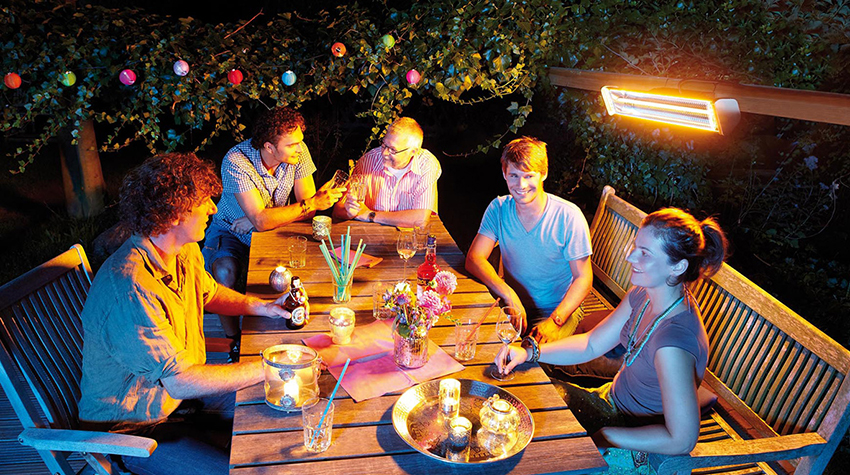 This type of heater was previously quite popular due to its simple design and fast heating. The infrared heater has a spiral wound on a ceramic base or placed on a tube made of quartz glass. On the other side of the spiral, a ray reflector is mounted. And to make it safer and to protect others, a lattice is placed in front of the spiral itself.
This type of heater was previously quite popular due to its simple design and fast heating. The infrared heater has a spiral wound on a ceramic base or placed on a tube made of quartz glass. On the other side of the spiral, a ray reflector is mounted. And to make it safer and to protect others, a lattice is placed in front of the spiral itself.
The main distinguishing feature of the heater is heating not only the air in the room, but also the interior items that are close to it. It is more often used in rooms to quickly heat a certain place, while oil and convection will take much more time for this, which, as a result, will be very costly in terms of electricity.
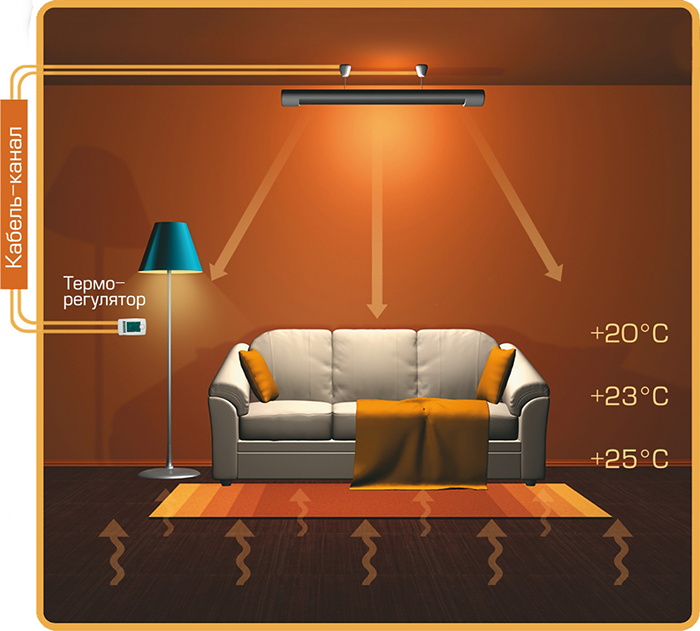 One of the disadvantages of an infrared heater is the emission of gases, which are poisonous. They are formed on the spiral of the tube after the dust is burnt out. But if you need to quickly warm up small room or, in a drafty room, it is ideal.
One of the disadvantages of an infrared heater is the emission of gases, which are poisonous. They are formed on the spiral of the tube after the dust is burnt out. But if you need to quickly warm up small room or, in a drafty room, it is ideal.
The features of the infrared heater include:
- prevent the circulation of dust, condensation, mold and the formation of damp walls in the room;
- safety for environment;
- ideal for a country house, summer residence, cottage and balcony.
Infrared heater safety
 Many buyers take an infrared heater with extreme caution due to the fact that they can be harmful to their health. If long time the heater is turned on, then you can really harm the body. Especially if you do not follow safety rules and put it very close to your place of stay or warm up the room for a long time without interruption.
Many buyers take an infrared heater with extreme caution due to the fact that they can be harmful to their health. If long time the heater is turned on, then you can really harm the body. Especially if you do not follow safety rules and put it very close to your place of stay or warm up the room for a long time without interruption.
To use an infrared heater as safely and efficiently as possible, you need to know:
- if you choose the right power, then the radiation from the heater can even become useful because of its ability to kill microbes;
- if you choose the right approach, then you can increase your metabolism as a result of its use;
Infrared heater design
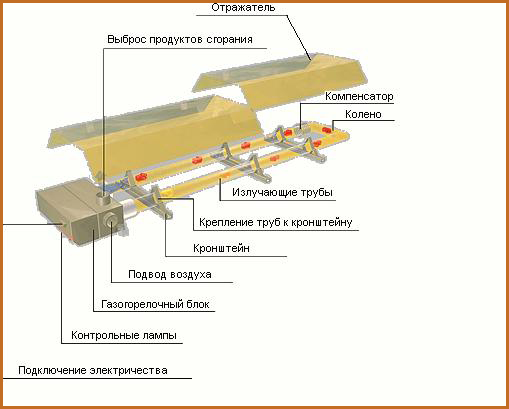 In infrared heaters, glass made of quartz is used for heating; a tungsten thread is placed inside it. Such glass is very resistant to sudden changes in temperature. Because of this, such a heater can operate at temperatures up to 95 degrees. Total weight it averages from 5 to 12 kg.
In infrared heaters, glass made of quartz is used for heating; a tungsten thread is placed inside it. Such glass is very resistant to sudden changes in temperature. Because of this, such a heater can operate at temperatures up to 95 degrees. Total weight it averages from 5 to 12 kg.
By design, heaters can be divided into two types:
- Infrared films;
Films consist of lavsan, foil and aluminum, which are placed on the insulation during repair.
Heating with infrared film will provide only local heating, in order to create one single source of heat, ceiling heating must be installed.
- Infrared panels
These panels are mainly wall-mounted or can be installed under flooring.
The device is quite resistant to bad weather conditions, so it can also be used outdoors.
Pros of infrared energy saving heaters
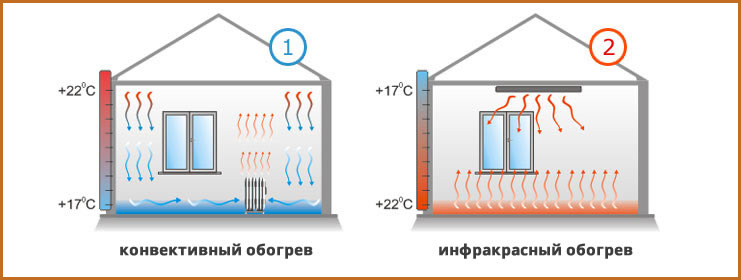 The advantages of infrared heaters include:
The advantages of infrared heaters include:
- infrared radiation, which is long-wavelength and acts on almost all objects near the heater and converts radiation into heat
- thanks to such heating, heat is concentrated only where it is needed;
- the absence of moving parts, which in practice break down rather quickly;
- the speed of heating the room;
- when using an infrared heater, you can save about 80% of energy when compared with other types of heaters;
- noiselessness of work;
- ideal for temporary heating or additional heating;
- compactness and ease of use;
- the heaters do not affect the room humidity and oxygen content.
Quartz economical heaters
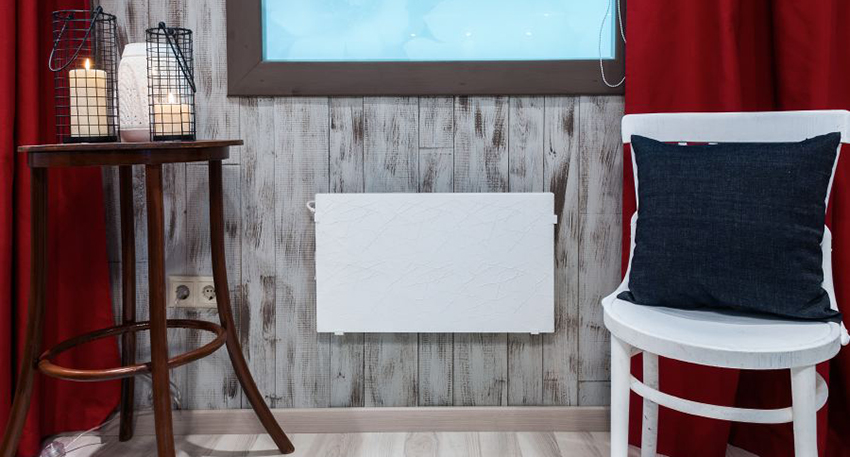 The quartz heater is unique in itself due to the fact that it provides a fast and accurate supply of heat in autumn, similar to the effect of the sun. This heat heats up only people and nearby objects without additional costs for heating the entire room.
The quartz heater is unique in itself due to the fact that it provides a fast and accurate supply of heat in autumn, similar to the effect of the sun. This heat heats up only people and nearby objects without additional costs for heating the entire room.
The advantages of such a heater include:
- instant heat supply;
- economy, electricity consumption is minimal;
- the duration of the service life;
- practicality;
- safety and ease of use;
- environmentally friendly and harmless to both the environment and humans.
The principle of operation by which quartz works is somewhat similar to the principle of operation of the heat that the sun emits. Sun rays passing through the space of space, in particular, not warm it, but the objects that are in it, and when they collide with the ground, it is not the air that warms up first of all, but only the objects that have come into contact with it.
Ceramic electric heating panel
 The main difference between the ceramic panel, which distinguishes it from all other heaters, is the rapid heating of the entire room, and not just its individual zones.
The main difference between the ceramic panel, which distinguishes it from all other heaters, is the rapid heating of the entire room, and not just its individual zones.
Ceramic panels do not create an electromagnetic field, thus radiation is safe, and create a maximum comfortable conditions... The ceramic panel is renowned for its soft flow, IR radiation and good heat envelope.
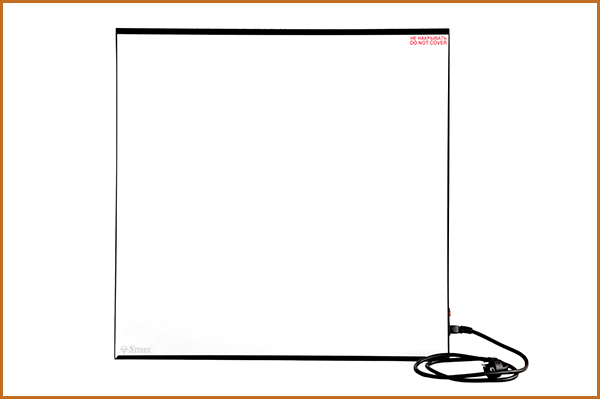 On average, one such panel has a power of about 375 watts and if it is installed near front door or windows, the chances of cold air entering the premises are minimal. It also gives additional savings on electricity. If ceramic electric heating panels are installed in the house, then there is no need to additionally install another heating system or equip a boiler room.
On average, one such panel has a power of about 375 watts and if it is installed near front door or windows, the chances of cold air entering the premises are minimal. It also gives additional savings on electricity. If ceramic electric heating panels are installed in the house, then there is no need to additionally install another heating system or equip a boiler room.
Their main characteristics:
- simplicity and ease of use;
- high rates of explosiveness;
- work in automatic mode;
- maintaining comfortable temperature indoors for a long time;
- waterproof;
- fireproof.
Choosing the Right Energy Saving Heater for Your Home
![]() Before buying a heater, you need to clearly define for yourself necessary requirements and criteria, namely, you need to heat a small living room or a spacious large garage. For every square meter of living space, about a hundred watts of power will be applied. To warm up a medium-sized room, a heater with a capacity of 800 thousand watts is enough.
Before buying a heater, you need to clearly define for yourself necessary requirements and criteria, namely, you need to heat a small living room or a spacious large garage. For every square meter of living space, about a hundred watts of power will be applied. To warm up a medium-sized room, a heater with a capacity of 800 thousand watts is enough.
The question is, is it enough to heat the apartment district heating- rhetorical. Everyone was faced with the cold when the frosts hit, and there is no need to talk about spring and autumn, when it is cold outside and the batteries do not work because of the insufficiently low average daily temperature. For this reason, in every house or apartment there is a device that helps to additionally heat the room.
There are many models of heaters on the market.We offer you an overview of common types heating devices that can be used for home and apartment. This information will help you choose economical heaters for home, and, in spite of cold weather, enjoy the warmth and comfort. Electric energy-saving heaters not only keep the heat in the room, but also help reduce energy waste during the cold season.
Which heating devices are suitable for residential premises
Household home heaters run on different energy sources. Mostly heating devices consume electricity. Heaters that require gas to operate diesel fuel and other energy resources are not used at home, so we will not consider them.
There are 3 types of electric home heaters:
- Oil radiators working on the principle of heating batteries.
- Convectors using the convection principle; inside such a device, the air heats up and mixes with the cold one in the room.
- Infrared devices that heat a room using long wavelength radiation.
Each type of device has advantages and disadvantages. To figure out which home heaters are better, we will consider them separately.
Oil radiators
An oil heater outwardly resembles a heating radiator, but it works on electricity and inside, instead of hot water, the other coolant is mineral oil.
Oil radiators quiet and economicalThe working surface of these devices is a metal case, which consists of several sections. Inside the body there is a reservoir for the coolant - mineral oil. To heat the coolant, a heating element located inside the device is used.
When the device is turned on, the heating element heats the oil, which in turn raises the temperature of the metal body of the device. The air in the room is heated according to the principle of convection - warm, heated between the ribs, rises to the ceiling, and cold air from the room comes to replace it. Thus, the heating of the room takes a long time, in order to speed up this process, you can purchase models with a built-in convector.
Oil radiators are popular due to the following advantages:
- affordable price;
- most models are equipped with a thermostat, so they work in automatic mode without turning off for a long time;
- mineral oil cools for a long time, so the heating remains for some time even after a power outage;
- the device is mobile, it can be moved to heat the required area.
Have oil coolers and disadvantages:
- Long warm-up time - some models take an hour to warm up. If you need to quickly warm up the room, use better convector or infrared heater.
- The large size and weight of the radiator makes it difficult to carry; also this device occupies useful area apartments.
- Oil radiators are not economical, their use will immediately be reflected in the form of a large sum for the electricity consumed.
Convectors
Convectors instantly heat up the air in the roomConvectors are electric heaters for an apartment, which use the convection principle during operation. Cold air enters the device, heats up and exits through the holes in the top of the device.
The main advantage of devices of this type is uniform heating of the room, due to the mixing of heated and cold air. Heating passes quickly, because the time for warming up the device is not required, the coolant is the air itself.
The advantages of convectors include low heating of the body and quiet operation, since there are no moving parts inside the devices.
Most heaters of this type are equipped with temperature controllers and sensors for automatic on and off, which allows them to be used for continuous heating of the room.
The cost of convectors is one of the lowest in comparison with other household heaters, but electricity consumption is high, which makes it impossible to save. It is better to choose such a heater for periodic additional heating.
Attention! Many sellers, offering to purchase a convector or an oil radiator, claim that these devices do not dry the air. But actually it is not. Devices operating on the principle of convection contribute to overdrying the air to a greater or lesser extent.
Infrared heaters
An infrared home heater is a modern device that emits long waves that are invisible to the human eye. Unlike previous types of heating devices, IR emitters do not heat the air, but the objects that are in the room.
Infrared heaters are the most common appliances on the marketInfrared devices have appeared recently, but have become popular due to the following advantages:
- In their work, the principle of convection does not lie, so they do not dry out the air, do not burn out oxygen from it, do not raise dust.
- Since these devices have no moving parts, their operation is silent.
- The room is heated evenly.
- Immediately after switching on, the IR emitter begins to warm the room, and no time is wasted on warming up the device itself.
- These devices can be used not only indoors, but also under open air, which is important when doing work or resting outdoors in winter.
Infrared heaters also have disadvantages, and the main one is their high cost. These devices are more expensive than other heaters, which is partially offset by their efficiency and versatility.
The second disadvantage of infrared heaters is that they cannot heat the part of the room that is covered by furniture, since the objects completely absorb radiation. The way out of this situation will be the purchase of wall and ceiling models of emitters.
The third drawback of these devices is the poor knowledge of the effect of infrared radiation on the human body. Radiators have recently been used for heating, so researchers have not yet accumulated enough data in order to come to an unambiguous conclusion about the benefits or harms of these devices for human health.
And the last disadvantage is that, like another product demanded by the buyer, infrared emitters often counterfeited. Fakes do not provide high-quality heating of the room, emit toxic compounds into the air and can become a hotbed of fire.
Economical models
One of the selection criteria household appliances- consumed electricity. Moreover, unlike washing machine or food processor, the heaters are working long time without switching off, so their use has a noticeable effect on the receipt of payment for electricity. In order not to pay impressive amounts monthly, it is better to choose a home heater that will provide heating when minimum consumption electricity.
There is a fan heater in almost every apartmentThe most economical and efficient heaters- fan heaters, ceramic and quartz panels.
Fan heaters
Fan heater is a convection-type household electric heater. Heating elements (open spirals or ceramic plates) are located inside the housing, and air is pumped to the heating elements using a propeller.
Advice! Choosing this economical heater for your home, opt for devices from well-known manufacturers, as low-quality devices overheat, quickly fail and become hotbeds.
The advantages of fan heaters are:
- compactness and mobility;
- economical consumption of electricity;
- affordable price.
The disadvantages of fan heaters include:
- noise generated by the rotation of the propeller;
- overdrying the air and reducing the oxygen content in it (which is typical for devices with an open heating coil);
- these devices heat up during operation and are therefore not designed for continuous operation.
Monolithic quartz heaters
Monolithic quartz batteries - energy-saving home heaters, which are a stove of quartz sand, inside which there are metal heating elements. These devices are economical due to the complete conversion of electrical energy into heat. The quartz plate heats up for a long time, but it is capable of heating the room for a long time after being turned off.
Quartz energy-saving heaters are bulky and heavy, which is associated with the materials used in their production. If you additionally equip the device with a thermostat, you can maintain set temperature in room. This option is often used for heating country country houses.
Ceramic heaters
The ceramic home heater is a novelty that is rapidly gaining popularity. The working element of such devices is a ceramic plate, inside which heating elements are laid.
WATCH THE VIDEO
These devices are divided into 2 types:
- Ceramic heater for the home, using the principle of convection - a kind of fan heater, in which the heating coil is replaced by a plate.
- Devices that combine the principles of convection and infrared radiation. These ceramic energy-saving home heaters can quickly heat a room using infrared waves and maintain a set temperature by convection.
When a person decides to warm his Vacation home, he tries to choose the most optimal heating equipment, which at the same time will still be quite economical. At the same time, the heating system of the whole house must be safe. It is most optimal to use electric heaters for these purposes.
Types of home heaters
Almost all electric heating devices work according to the same principle - they convert electricity into heat. There are several types of heaters that differ in their design.
Namely:
- Infrared heaters - earlier this type of heaters was quite widespread, an infrared heater in its design has a spiral that is wound on a ceramic base or on a quartz tube. The spiral from the action of the current heats up and releases heat.
- Infrared panels - these panels are wall-mounted or can be installed under the floor to create a local heating zone.
- Ceramic panels allow you to quickly warm up the entire room, and besides, such panels do not create an electromagnetic field, a soft stream of IR radiation comes from them, and they have good convection.
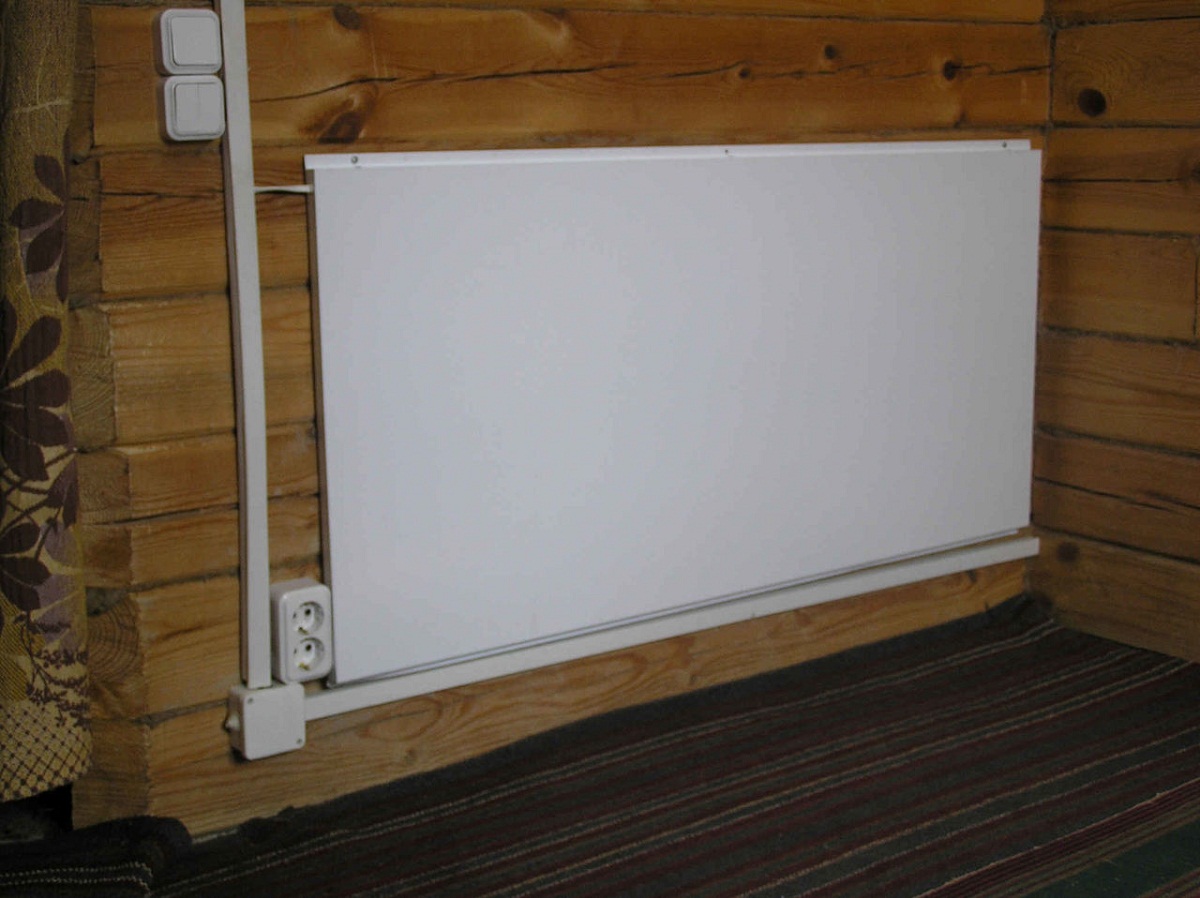
There is also an oil-fired electric heater - heat is transferred by heating the oil from the heating element, and such heaters are equipped with a thermostat that turns the heater on and off, depending on the set temperature.
Each heater has its own certain pros and cons, one of the main disadvantages is a rather high price, both for the devices themselves and the prices for energy consumption.
If the house is large, then it is worth taking a closer look at the models of the new generation, which effectively heat the room, and are also considered economical in terms of energy consumption.
The principle of operation of an electric economical heater
To reduce energy consumption, you should choose energy-saving electric heaters. Today, the most economical home heater is an electric convector.
The principle of its operation is as follows:
- The fan (if the model is equipped with a fan), located at the bottom of the convector, draws in air from below (cold).
- Passing through the heating elements inside the convector, the air comes out already warm from the top of the device.
- Automation controls heating.
Due to the fact that the heating elements begin to work immediately after switching on and almost all the electricity is spent on heating the room, converter electric heaters are considered quite economical. There are many of the most different types similar designs, ranging from the most simple models, and ending complex design equipped with a thermal cut-off when overheating.
Due to this, such electric convectors are almost completely safe.
There is another type of a fairly economical heater for a home or summer cottage - wall, ceiling and even floor infrared heaters which influence infrared radiation on furniture, walls, floors, etc., which, in turn, begin to emit heat. Such heaters are noiseless and are great for heating a country house or for heating any other premises, even if it is Dnepropetrovsk.
Description of electric heater
In residential premises and not only, electric heat heaters of the most different forms and structures that are most often used as an additional source of heat or, as the main one to maintain constant temperature in room.

Modern industrial heaters are divided into:
- Convectors;
- Electroceramic;
- Oil radiators;
- Fan heaters and heat guns;
- And also infrared modifications.
All electric heaters can be divided into several groups, these are those that serve to heat the air. And also those heaters that serve to heat water with the help of heating elements, and supply it to the batteries, this type includes a warm floor under which pipes are laid through which hot water circulates.
An oil heater, for example, bought in a Foxtrot store, can work for a long time, while they are safe, sufficiently mobile and can heat a room with an area of up to 30 m 2 / kW.
Such electric radiators for the most part Chinese, but there are also German and Finnish models. Electro-ceramic - their basis, ceramic a heating element blown by a fan. Such heaters have a fairly high efficiency and quickly warm up the room, while they do not burn oxygen and are capable of operating in several modes. A fan heater, for example, Veterok, is equipped with a fan and a heating element, despite the fact that it is relatively small and low-power, after the first minutes of operation, heat begins to spread from it. When a certain temperature is reached, it switches itself off and after a drop in temperature, it turns on again. But not all species are equipped with such a system.
The most economical new generation electric heaters
The constant increase in electricity tariffs makes many people think about reducing the cost of electric heating. To do this, some people switch, if possible, to electric gas heating, such a combined method consumes less electricity, and allows you to heat a house or other room all year round.
But, it is not always possible to use such a combined method, and you have to completely switch to electric heating, while using electric heaters that are cheap in terms of electricity consumption.
Modern convector electric heaters are produced with closed housing elements, as well as with automatic adjustment preset temperature. In addition, such heating systems for an apartment or a summer cottage wooden house fit perfectly.
Ceramic heaters are characterized by:
- In all designs, the heating element is built into silicon panels;
- Such heaters have a long service life;
- Pays off quickly.
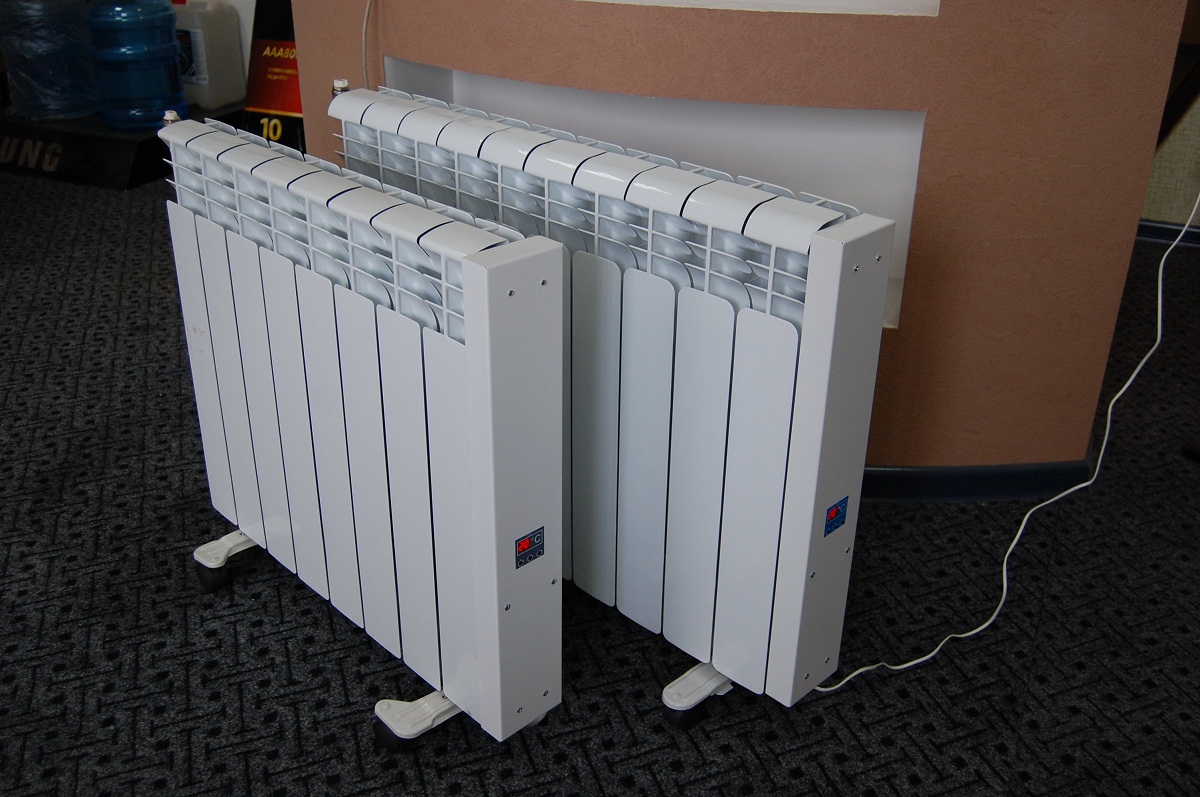
Some of these heating systems are partially computerized. A smart electronic heater of the new generation allows you to regulate your work using modern smartphones, moreover, using Internet technologies. When choosing a heater, you should pay attention to the ease of installation, the ratio of heating area and electricity costs, as well as indicators such as safety, including the heater must be fireproof, as well as energy efficient and super economical.
Which is better to choose a heater for a summer residence: reviews
Not everyone country houses and summer cottages are connected to gas supply, thanks to which you can successfully heat the house. In this case, you can use to heat rooms not only stove heating, but also electric heaters powered by electricity.
To choose the most effective household heaters for your home or summer cottage, you should use the following tips:
- By applying infrared heating, you can make not only warm the floor, but also the walls and even the ceiling, using directional heaters.
- Manufacturers produce models such as carbon and ceramic.
- Convection heaters are great for a summer cottage or home, as they are safe.
If there is an anti-freeze function, then you can leave the equipment working for the whole winter, this is especially true if people do not live in the house permanently. Heaters of this type consume a minimum amount of electricity while being safe and perfect not only for a private house, but also for outbuildings, for example, a garage. To choose the most optimal and best home air heater, you should read the numerous reviews and decide for yourself which models are better, and which design has one or another advantage.
Heater characteristics Veterok
Previously, some kind of inexpensive heat heaters for the home were also produced, for example, tubing (not to be confused with NTK) and not only, which were called Veterok. Such a heater is equipped with a fan and a heating element.
Principle of operation:
- The cold air is sucked in by the fan;
- It is passed through a heating element;
- The air comes out already warm or even hot.
The basis of this design is a rather powerful heating element and an air fan that operates in 2 modes. Such a heater quickly turns on and is able to warm up a room or other room with low ceiling or a small area behind a short time with a closed door.
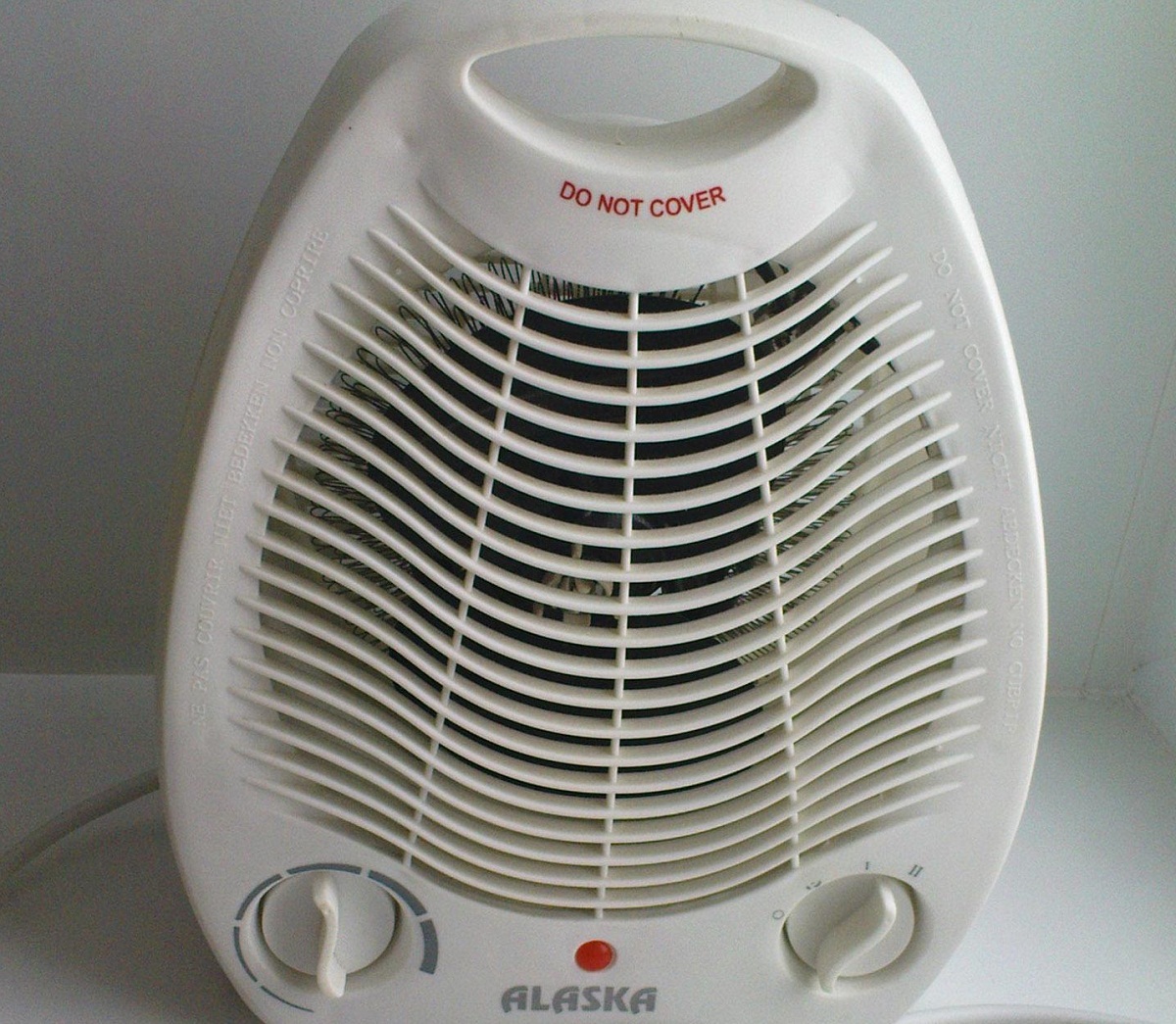
Such a baby does not have a particularly low energy consumption, but at the same time it is characterized by compact dimensions, so that it can be used in almost any room, including in winter.
Today this heater, like many Soviet things, is distinguished by quality, reliability and efficiency. The only drawback of such a heater is that it cannot be switched on for constant heating. If you still need to heat the room for a long time, then it is best to use it at half the power. The only drawback of such heaters is the drying of the air in the room, and they cannot be used for a long time.
Basic principles for choosing an energy-saving heater for a summer residence
Room heaters for summer cottages and not only are available in all kinds of designs, and it is difficult for a person to decide which heating systems will consume a minimum of electricity, while being relatively inexpensive.
Quartz battery (working principle):
- Its main feature is fire safety and low energy consumption.
- The design is a monolithic quartz body with a thermostat.
- A powerful heater is built inside.
- Thanks to ceramics, such a battery cools down slowly, giving off heat to the room.
The glass ceramic pendant heater combines infrared radiation with convection, which allows you to quickly warm up certain areas of the room. In addition, such a heater is completely safe for children, since they simply cannot reach it. Such panel heaters, both wall-mounted and floor-standing, are considered energy-efficient and consume a minimum amount of electricity. In addition, they are quite compact and lightweight, and allow you to quickly warm up the room.
Tips: what is the most energy-efficient heater to choose
Some people who are well versed in technology believe that the most economical and at the same time practically autonomous heater is a heat pump, which takes low-temperature heat from the surrounding space and redirects it into the house. But the rating of such heat pumps is rather low, and they are not widely used.
Micathermic heater emits long-wave infrared radiation, which heats objects that are both close to it and at some distance. And the objects themselves are already beginning to radiate heat. At the same time, the heater itself remains practically cold. An inverter heater is, in fact, an air conditioner that can work not only for heating, but also for cooling. Such heaters are also considered economical. All heaters are best connected via special device- a socket with a thermal sensor, this design also saves energy. You can find it in almost any store that sells household appliances, for example, in Eldorado.
Electric heaters for home
In winter, when severe frosts crackle outside the windows, there may be a need for additional heat sources to help central system maintain a comfortable microclimate. The way out of this situation is to use electric heaters for the home, which do an excellent job with this task.
What assortment of similar products is available on the market today? And what are the advantages and disadvantages of the most popular models?
Types of heating devices
The existing assortment can be classified into several groups:
- Fan heaters.
- Oil radiators.
- Convectors.
What is a fan heater?
The principle of operation of the device is as follows. The fan heater sucks in air and drives it through the heating coil, and then throws it back out.
The main advantage of fan heaters is that they redistribute warm air well throughout the room and are inexpensive at the same time. The devices are very practical, but they have one significant disadvantage- reduce the level of oxygen in the air and make a lot of noise during operation.
Oil radiator
This is a design that looks like a battery. It also consists of several sections, but inside it is filled not with water, but with oil. When heated with an electric heating element, the oil evenly gives off its heat. Typically, the battery design has temperature control sensors. They allow you to turn off the device when the air in the room heats up to a certain value.
There are many advantages to oil coolers. This is both quiet operation, and the ability to use the device around the clock, and an excellent appearance that fits well into any style of interior decoration.
There is only one drawback - a very high surface temperature. Therefore, experts do not recommend choosing oil radiators for heating children's rooms in order to avoid burns in children.
Convectors
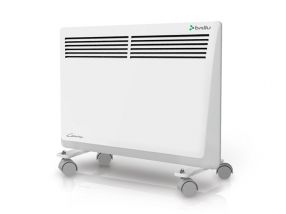
Electric heater (convector)
Convectors are panel-like appliances with numerous slots in the upper part. Cold air, getting inside, passes through the heating element and expands. As a result, the already hot air rises upward, leaving out through the indicated slots. In addition to the fact that air actively circulates around the room, the front surface of the convector also heats the room.
Such devices have many advantages. They:
- Does not burn oxygen.
- They work absolutely silently.
- The original design allows the front surface not to heat up much and give off heat well.
- Such devices can be installed in rooms with high humidity.
Electric convectors turn out to be more profitable and more convenient than many other devices:
- First, they are safe to use. By accidentally touching them, it is difficult to get burned. And this is true where small children grow up. The outer panel heats up no more than 60 degrees, and this is why convectors are superior to oil radiators.
- Secondly, electric convectors help to save energy. Almost all models are equipped with automatic thermostats that control the set temperature with an accuracy of 0.4 seconds. Other models control the temperature with an accuracy of 1-5 seconds, which increases energy losses by 5%.
- Thirdly, only electric convectors are versatile. They can be chosen both as an additional heat source and as the main one. In any situation, the device copes with the tasks assigned to it by 100%. It can be wall-mounted using very simple fixings. Convectors are easy to use, mobile and practical.
Note! Having decided on the design of the device, it is necessary to thoroughly study its technical parameters. Even in one lineup there may be several lines that are radically different from each other.
Basic requirements for models
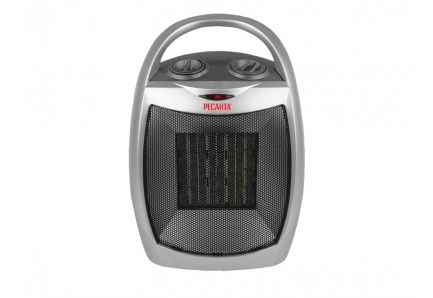
Requirements for heaters
On sale presented a large number of heating devices that differ from each other both in design and in the principle of the device. But state standards impose general requirements on all of them.
When choosing this or that model, you need to pay attention to several technical parameters- on the power of the device, its surface temperature, safety of use and cost. Let's consider each criterion separately.
Power
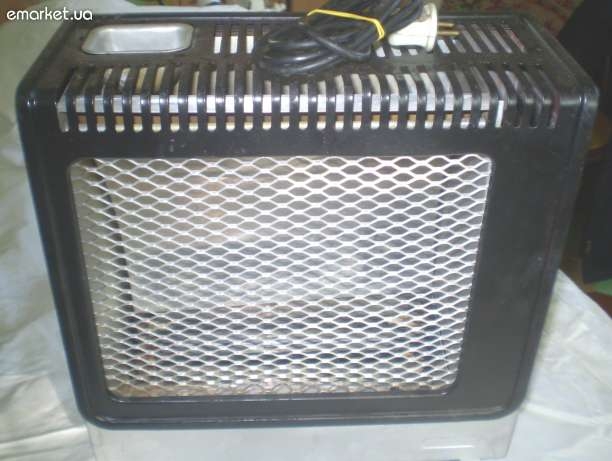
Electric heater 2-heater
In order for an electric heater for a home to be effective, it is necessary to correlate the power of the device and the area of the heated room. If the heater is to be used as a supplement to central heating, its output is calculated at 40 W per square meter living space. If, in addition to the heater, other heat sources are not provided, then the indicators increase significantly, and you should choose devices that generate 100 W per sq. M.
Note! With a competent modern insulation the power of the heater can be reduced by 30-50%.
The ideal choice is a model in which the described indicator can be adjusted by setting different power modes. It is good when the design has thermostats that allow you to automatically maintain the specified heating temperature.
Air temperature and surface heating
It is noticed that more favorable conditions indoors are created when moving warm air... But few people know that the most powerful convectors provide the lowest air speed. And this, in turn, helps to give high fever and effectively heat the room. From this position, the model is chosen individually, taking into account personal preferences. After all, someone feels good in a very heated room, while others do not like the high temperature.
Note! The highest temperature is given by passive heat convectors, the lowest - by fan heaters and infrared heaters.
It is necessary to carefully study such a parameter as surface temperature when choosing oil radiators. Batteries that are too hot can burn the surface of the skin if handled roughly. Irreparable can happen if the battery is depressurized. Hot oil is dangerous even for human life. Therefore, if small children grow up in the house, it is better to choose convectors rather than radiators. Although their heating element is located close to the body, it is difficult to get burned on it.
Safety of use
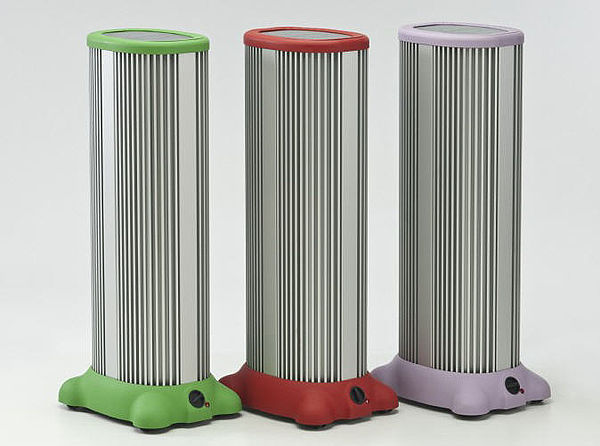
Electric heaters Vect
Not for home. Indeed, in this case, the cost of the device is often reduced by reducing the safety of its use. Any such device is connected to the mains. Therefore, it will not be superfluous to choose models equipped with overheating protection sensors and emergency fire sensors, excluding the possibility of human contact with the heating element.
The safest in this regard is a thermal convector, the design of which implies the use of all of the above regulators. However, the choice is yours.
Price
If we compare the cost of various heaters, then it can differ significantly, or even more. Therefore, it is important to learn one rule here. High-quality electric heaters cannot be cheap, since when they are created, not only heating issues are solved, but also safety.
Almost all budget models have an open spiral, which, when heated, actively destroys oxygen and living organics. Therefore, a dry microclimate is established in the rooms, and bad smell... Almost everything is missing from them. modern features protection, and the service life is very low. That's why right choice obvious.
Generalization on the topic
For those who are planning to buy electric heaters for the home, we advise you to heed our recommendations. A correctly selected model will help create more comfortable living conditions without risk to health.
Experts recommend paying attention to electric convectors - a profitable and practical option for a family with children. If such a device is used as a supplement to central heating, then for one room it is enough to choose a 700 W device. If central heating no, then 1000 watts.
